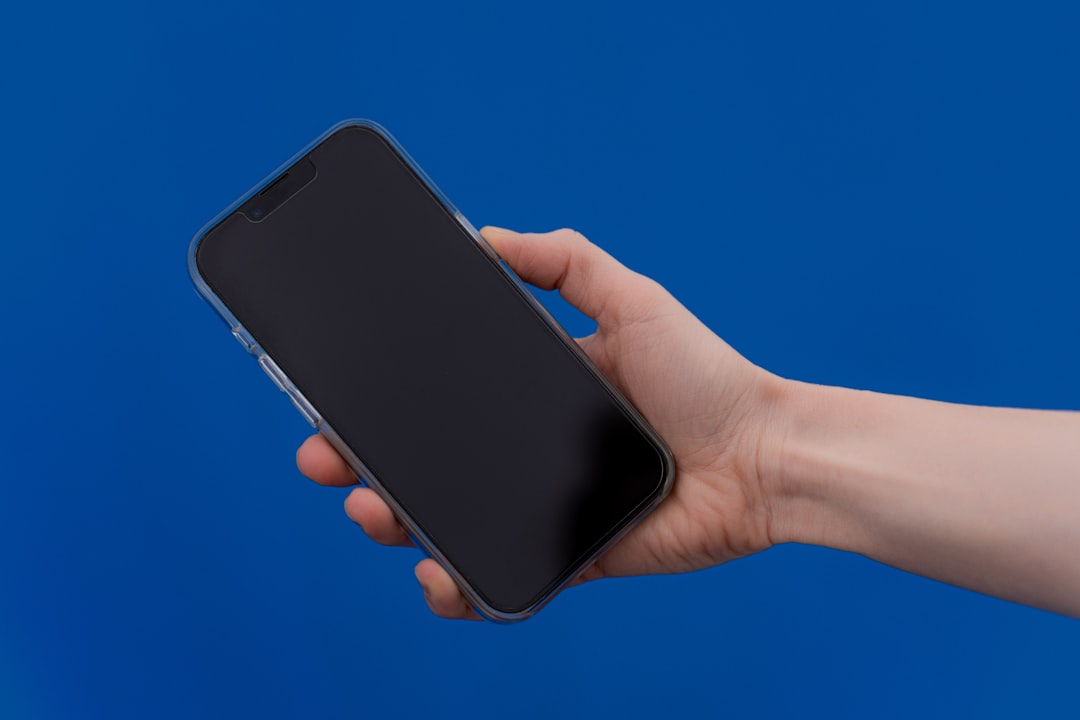Hide Alerts is a feature on the iPhone that allows users to mute notifications from specific conversations in the Messages app. When this feature is activated for a particular chat, the user will no longer receive audible alerts or visual notifications for new messages from that conversation. This can be particularly useful in situations where a user wants to minimize distractions without completely blocking a contact or group chat.
For instance, if someone is part of a busy group chat that generates a high volume of messages, enabling Hide Alerts can help maintain focus while still allowing the user to check messages at their convenience. The Hide Alerts feature is not limited to just individual conversations; it can also be applied to group chats. This flexibility allows users to tailor their notification preferences based on their current needs.
For example, if a user is in a group chat with colleagues discussing work-related topics but prefers not to be disturbed during personal time, they can easily mute notifications for that group while still being able to engage with other important conversations. This feature is part of Apple’s broader effort to enhance user control over notifications, allowing for a more personalized and less intrusive communication experience.
Key Takeaways
- Hide Alerts on iPhone allows users to silence notifications for specific conversations in the Messages app
- To enable Hide Alerts, open the Messages app, swipe left on the conversation, and tap “Hide Alerts”
- The purpose of Hide Alerts is to prevent notifications from specific conversations from appearing on the lock screen or making a sound
- To disable Hide Alerts, open the Messages app, swipe left on the conversation, and tap “Show Alerts”
- The main difference between Hide Alerts and Do Not Disturb is that Hide Alerts only silences notifications for specific conversations, while Do Not Disturb silences all notifications
- Users can customize Hide Alerts for specific contacts by opening the conversation, tapping the contact’s name, and selecting “Hide Alerts”
- While Hide Alerts is enabled, users can still manage notifications by going to Settings > Notifications > Messages
- Common issues with Hide Alerts include accidentally enabling it, not receiving notifications from specific contacts, and not being able to disable it
How to enable Hide Alerts on iPhone
Enabling Hide Alerts on an iPhone is a straightforward process that can be completed in just a few taps. First, users need to open the Messages app and navigate to the conversation they wish to mute. Once in the chat, they should tap on the contact’s name or the group name at the top of the screen.
This action will bring up a menu with various options related to that conversation. Among these options, users will find the “Hide Alerts” toggle, which can be switched on by tapping it. When activated, a crescent moon icon will appear next to the conversation, indicating that alerts have been successfully muted.
Alternatively, users can also enable Hide Alerts through the Settings app. By going to Settings, then Notifications, and selecting Messages, they can manage their notification preferences more broadly. However, for specific conversations, the first method is typically more efficient.
It’s worth noting that while Hide Alerts silences notifications, it does not prevent messages from being received; users can still view new messages by opening the conversation at any time. This duality allows for a balance between staying connected and managing distractions effectively.
Understanding the purpose of Hide Alerts

The primary purpose of Hide Alerts is to provide users with greater control over their messaging experience. In an age where constant connectivity can lead to information overload, this feature serves as a valuable tool for managing one’s digital environment. By allowing users to mute notifications from specific conversations, Apple acknowledges the need for personal space and uninterrupted time, whether for work, study, or relaxation.
This capability is particularly beneficial in professional settings where team chats may become overwhelming due to frequent updates and discussions. Moreover, Hide Alerts can also serve as a means of prioritizing communication. Users may find themselves in situations where certain conversations are more critical than others.
For instance, family members or close friends may warrant immediate attention, while less urgent group chats can be muted without consequence. This selective approach helps users focus on what truly matters at any given moment, fostering a more intentional use of technology. The ability to customize notification settings in this way reflects a growing understanding of individual preferences and the importance of mental well-being in our increasingly connected lives.
How to disable Hide Alerts on iPhone
| Method | Steps |
|---|---|
| Using Messages App | 1. Open the Messages app 2. Open the conversation 3. Tap on the contact’s name at the top 4. Toggle off “Hide Alerts” |
| Using Settings | 1. Go to Settings 2. Scroll down and tap on “Messages” 3. Tap on “Send & Receive” 4. Tap on the contact’s name 5. Toggle off “Hide Alerts” |
Disabling Hide Alerts on an iPhone is just as simple as enabling it. Users can return to the muted conversation in the Messages app by tapping on it and then selecting the contact or group name at the top of the screen again. From there, they will see the “Hide Alerts” option, which can be toggled off with a single tap.
Once this action is completed, the crescent moon icon will disappear from the conversation list, indicating that notifications are once again active for that chat. Alternatively, if users prefer to manage their notification settings through the Settings app, they can do so by navigating to Settings > Notifications > Messages and adjusting their preferences accordingly. However, this method is generally more suited for broader notification management rather than specific conversations.
It’s important for users to remember that once Hide Alerts is disabled, they will start receiving notifications for new messages again, which may include sounds and banners depending on their overall notification settings.
The difference between Hide Alerts and Do Not Disturb
While both Hide Alerts and Do Not Disturb serve the purpose of reducing interruptions from notifications, they operate in fundamentally different ways and contexts. Hide Alerts specifically targets individual conversations or group chats within the Messages app, allowing users to mute notifications from selected contacts while still receiving alerts from others. This feature is ideal for those who want to maintain some level of communication without being overwhelmed by every message.
On the other hand, Do Not Disturb is a broader setting that silences all incoming calls and notifications across the entire device. When activated, Do Not Disturb prevents any alerts from appearing on the screen or making sounds, effectively creating a complete communication blackout until it is turned off or scheduled to deactivate at a certain time. This feature is particularly useful during meetings, sleep hours, or any situation where complete focus is required.
Users can also customize Do Not Disturb settings to allow calls from specific contacts or repeated calls in case of emergencies, adding another layer of flexibility.
Customizing Hide Alerts for specific contacts

Customizing Hide Alerts for specific contacts allows users to tailor their messaging experience even further based on individual preferences and relationships. For instance, if someone frequently receives messages from multiple group chats but only wants to mute one particular group while keeping alerts active for others, they can easily do so by enabling Hide Alerts for that specific conversation alone. This selective muting helps maintain focus without sacrificing important communications.
Additionally, users can apply this feature strategically based on their daily routines or activities. For example, during work hours, one might choose to mute notifications from social groups while keeping alerts enabled for family members or work-related chats. This customization ensures that users remain reachable for essential communications while minimizing distractions from less critical conversations.
The ability to manage notifications in such a granular way reflects an understanding of diverse communication needs and enhances overall user satisfaction with the iPhone’s messaging capabilities.
Managing notifications while Hide Alerts is enabled
When Hide Alerts is enabled for specific conversations, managing notifications becomes a matter of personal choice and discipline. Users who have muted certain chats will not receive audible alerts or banner notifications; however, they can still check their messages at any time by opening the Messages app and viewing their conversations. This means that while they may miss immediate notifications from muted chats, they retain full access to all messages whenever they choose to engage with them.
To ensure that important messages are not overlooked while using Hide Alerts, users might consider setting aside specific times throughout the day to check muted conversations actively. For instance, someone might decide to review all muted chats during lunch breaks or after work hours. This proactive approach allows users to stay informed without being constantly interrupted by incoming messages.
Additionally, users can utilize visual cues such as badges on the Messages app icon that indicate unread messages in muted conversations, helping them keep track of important communications without feeling overwhelmed.
Troubleshooting common issues with Hide Alerts
Despite its user-friendly design, some individuals may encounter issues when using the Hide Alerts feature on their iPhones. One common problem is forgetting that alerts have been muted for certain conversations, leading to missed messages during critical times. To address this issue, users should regularly review their conversation list and check for any muted chats indicated by the crescent moon icon.
If they find themselves missing important communications frequently, it may be worth considering whether they need to disable Hide Alerts for those specific contacts. Another potential issue arises when users believe they have enabled or disabled Hide Alerts but do not see the expected changes reflected in their notification settings. In such cases, restarting the device can often resolve minor glitches that may affect how settings are applied.
Additionally, ensuring that the iPhone’s software is up-to-date can help prevent compatibility issues with features like Hide Alerts. If problems persist despite these troubleshooting steps, consulting Apple Support or visiting an Apple Store may provide further assistance in resolving any technical difficulties related to notification management on their devices.
If you are curious about other useful features on your iPhone, you may want to check out an article on getiphoneinfo.com that discusses how to use the Screen Time feature to monitor and control your device usage. This article provides helpful tips on setting up Screen Time limits and restrictions to help you manage your screen time effectively. It’s a great resource for anyone looking to improve their digital well-being and reduce distractions.
FAQs
What does “Hide Alerts” do on iPhone?
“Hide Alerts” is a feature on iPhone that allows you to silence notifications for a specific conversation in the Messages app. When you enable “Hide Alerts” for a conversation, you will still receive the messages, but your device will not make a sound or display a banner or badge for that conversation.
How do I enable “Hide Alerts” on iPhone?
To enable “Hide Alerts” for a specific conversation on iPhone, open the Messages app, swipe left on the conversation you want to silence, and tap on the “Hide Alerts” option. You will see a moon icon next to the conversation to indicate that “Hide Alerts” is enabled.
Can I still see messages from a conversation with “Hide Alerts” enabled?
Yes, you can still see messages from a conversation with “Hide Alerts” enabled. The messages will appear in the Messages app as usual, but your device will not make a sound or display a notification for that conversation.
Will the sender know that I have “Hide Alerts” enabled for their messages?
No, the sender will not be notified that you have “Hide Alerts” enabled for their messages. The feature is private and does not alert the sender that their messages are being silenced.
Can I customize “Hide Alerts” for different conversations?
Yes, you can customize “Hide Alerts” for different conversations on iPhone. You can enable or disable “Hide Alerts” for individual conversations based on your preferences.










